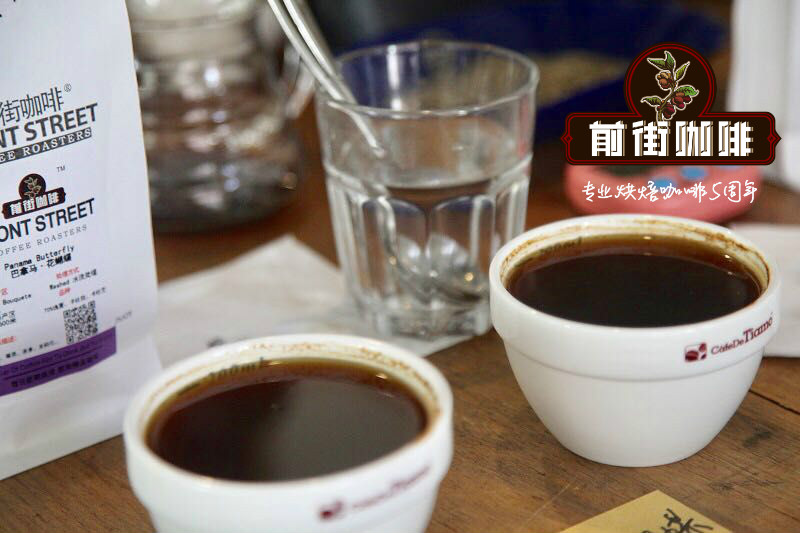Introduction of flavor description varieties of G1G2 coffee beans in Sidamo, Ethiopia
Introduction of flavor description varieties of G1G2 coffee beans in Sidamo, Ethiopia
The Sidamo region (Sidama) is located south of Ethiopia. The industry here is dominated by agriculture, and the coffee planting area is located around the Great Rift Valley. The largest city in Sidama province is Hawassa, which is an important distribution center for coffee exports. The flavor of coffee in Seymour is very diverse, because of different soil composition, regional micro-climate and countless kinds of native coffee products, the coffee produced in each urban area has obvious differences and characteristics. Ardi is located in the southern part of Guji, Oromia, Sidama and Gedeo. This batch is produced in a small village near the city of Michicha & KelensoMoconissa in the Guji region of Sidama province. The Ardi cooperative has 700 family members of coffee shops, named Ardi after the discovery of fossilized female remains with a history of 440 years in 1992, Ardi. The processing process of Ardi is relatively strict, with ripe peaches artificially picked and dried on a high African scaffolding for 3 weeks. In the whole 3-week drying process, the workers change it every hour, and every day they do it by hand to ensure that the coffee peaches are dry, ensuring that the coffee peaches are ripe every day, and the final products are finished with the same drying.
Its improved daily method, that is, to improve the two shortcomings of the traditional way: when picking beans, only fully ripe dark-colored coffee peaches are used. Before exposure, beans will be removed from defective beans before processing, and the size and maturity of peas look average. Then, use a tall wooden frame or a whole scaffolding to make a day, so as to avoid the smell of beans on the ground. In the process of exposure, we should take good care of the beans so that the coffee beans can be exposed to water loss. Every three to five days, the coffee workers will remove the bad and moldy beans by artificial cooking. Therefore, by the time the exposure is completed, before the peel and flesh of the beans are removed from the market, a piece of dark coffee peaches has already won the raw beans such as black coffee and other raw beans: there are mainly eight major producing regions of Isopiac coffee: Ekempti, Limu, Illubabor, Djimma, Harrar, Teppi/Bebeka, Sidamo, and Yirgacheffe. Espresso coffee is very popular in Taiwan, especially in the famous regions of Harrar, Sidamo and Yirgacheffe. The province of Sidama is located in the south of Ethiopia and the province of Arsi in the north. The province extends to the province of Bale and the west is the administrative district of Gamu Gofa. The administrative district of Sidama province includes two very famous producing areas, Yirgacheffe and Kochere. The industry is dominated by agriculture, and the planting area of coffee is located in the Rift Valley (Great Rift Valley).

Important Notice :
前街咖啡 FrontStreet Coffee has moved to new addredd:
FrontStreet Coffee Address: 315,Donghua East Road,GuangZhou
Tel:020 38364473
- Prev

Panama Flower Butterfly Coffee Taste Flavor Description Processing Variety Introduction
Boquete is a volcanic region at high altitude, because Baru Volcano brings quite fertile soil, high terrain, wet and cold air, different sunshine, abundant rainfall, and rivers flow through it, resulting in high quality Panamanian fine coffee. This batch is from the same factory as Emerald Manor.
- Next

Characteristics of Panamanian Coffee Taste Manor Flavor description treatment quality Grinding scale introduction
Panamanian coffee practice characteristics, taste, manor flavor description, quality grinding scale, this bean is washed in full water, the appearance is fresh emerald green, the beans are full and shiny, and at first glance they are hard beans with high density. Baked to an obvious degree of high fruit aroma shows, the entrance is also juice-like sweet and sour, bright and refreshing. Bake a little deeper to the baking degree of high, dry fragrance
Related
- Detailed explanation of Jadeite planting Land in Panamanian Jadeite Manor introduction to the grading system of Jadeite competitive bidding, Red bid, Green bid and Rose Summer
- Story of Coffee planting in Brenka region of Costa Rica Stonehenge Manor anaerobic heavy honey treatment of flavor mouth
- What's on the barrel of Blue Mountain Coffee beans?
- Can American coffee also pull flowers? How to use hot American style to pull out a good-looking pattern?
- Can you make a cold extract with coffee beans? What is the right proportion for cold-extracted coffee formula?
- Indonesian PWN Gold Mandrine Coffee Origin Features Flavor How to Chong? Mandolin coffee is American.
- A brief introduction to the flavor characteristics of Brazilian yellow bourbon coffee beans
- What is the effect of different water quality on the flavor of cold-extracted coffee? What kind of water is best for brewing coffee?
- Why do you think of Rose Summer whenever you mention Panamanian coffee?
- Introduction to the characteristics of authentic blue mountain coffee bean producing areas? What is the CIB Coffee Authority in Jamaica?

